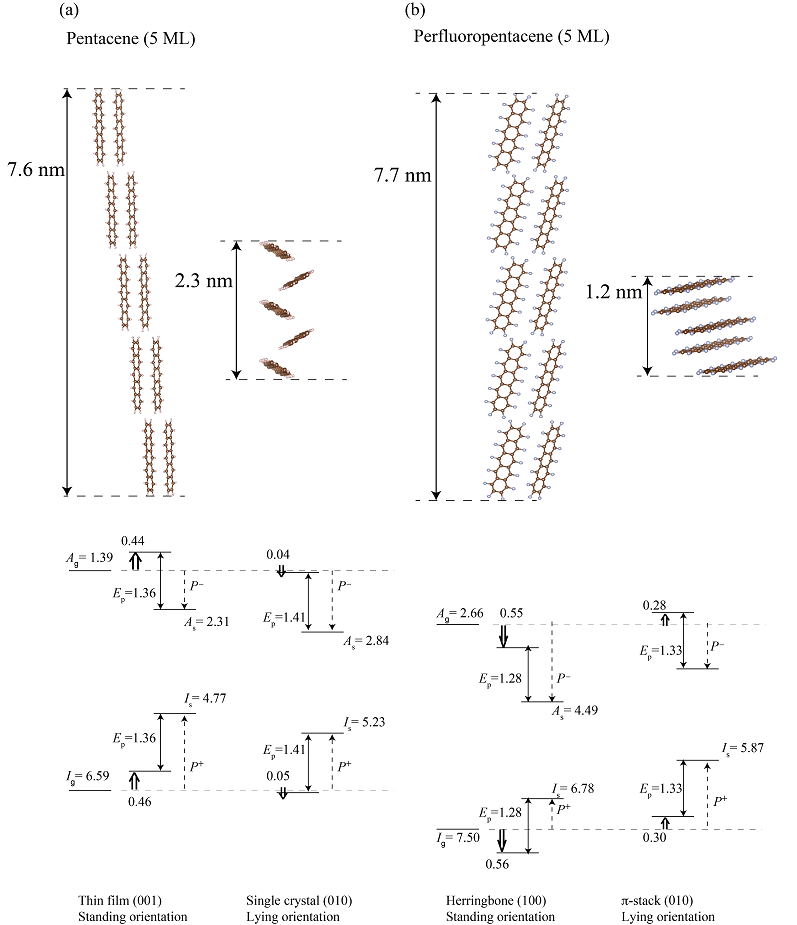Preprint
Article
Determination of the Ionization Energy and the Electron Affinity of Organic Molecular Crystals from First-Principles: Dependence on the Molecular Orientation at the Surface
This version is not peer-reviewed.
Submitted:
25 November 2019
Posted:
27 November 2019
You are already at the latest version
Abstract
I demonstrate that the ionization energy (IE) and the electron affinity (EA) of organic molecular crystals can be predicted from first-principles. Here, I describe the induced electronic polarization and the electrostatic effects upon crystalline IE and EA. I also demonstrate that the electronic polarization mainly originates from the screened coulomb interaction inside the crystalline bulk phase, and that the electrostatic contribution to IE and EA crucially depends on the orientation of the molecule at the surface. The former is well described by the GW approximation, while the latter is reasonably estimated by the difference in frontier orbital energy between the gas phase and the surface at the level of a generalized gradient approximation to the density functional theory. The present methodology enables to demonstrate the impact of the electrostatic effect upon the energy level of the injected charge at a multi-monolayer surface of an organic semiconductor thin film.

Keywords:
Subject:
Chemistry and Materials Science - Surfaces, Coatings and FilmsCopyright: This open access article is published under a Creative Commons CC BY 4.0 license, which permit the free download, distribution, and reuse, provided that the author and preprint are cited in any reuse.
Alerts
MDPI Initiatives
Important Links
© 2025 MDPI (Basel, Switzerland) unless otherwise stated




